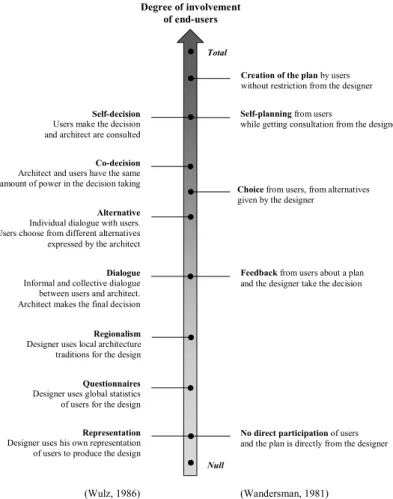Integration of end-user needs into building design projects: use of boundary objects to overcome participatory design challenges
Texte intégral
Figure

Documents relatifs
By looking into the incentives of all the participants of a project, we will unpack the trading zones of digital history projects, to gain an understand- ing of how
Focusing on bound- ary objects enables us to characterize five categories of artifacts and tools that facilitated collaboration between actors involved in the design process
We summarized the proceeding of workshops 1 and 3 on a table that compared: (1) the diagnostic results for the farmers presenting their case; (2) the way
This interface encapsulated the driver requirements on temporal, spatial and mode information, by mapping the in-path target data onto a representation of the radar display
We used some popular software in each field, from 3D modeling solution, thermal analysis, and 3D game engines commonly dedicated to integration and management of
Medical News, News Aggregation, Content Ranking, User Needs, Intelligent System, Content Analisis, Data Mining, Context Filtering, Bayesian Clustering, Bayesian Networks.. 1
Indeed, while talking of their projects, architects tend to ascribe a genuine ontological status to their ‘creatures’, even if they do not have a physical presence: they refer to
The literature in this area suggests that there are three ways in which green renovations are not ideal. The first is that uptake is very low, considering the fact that